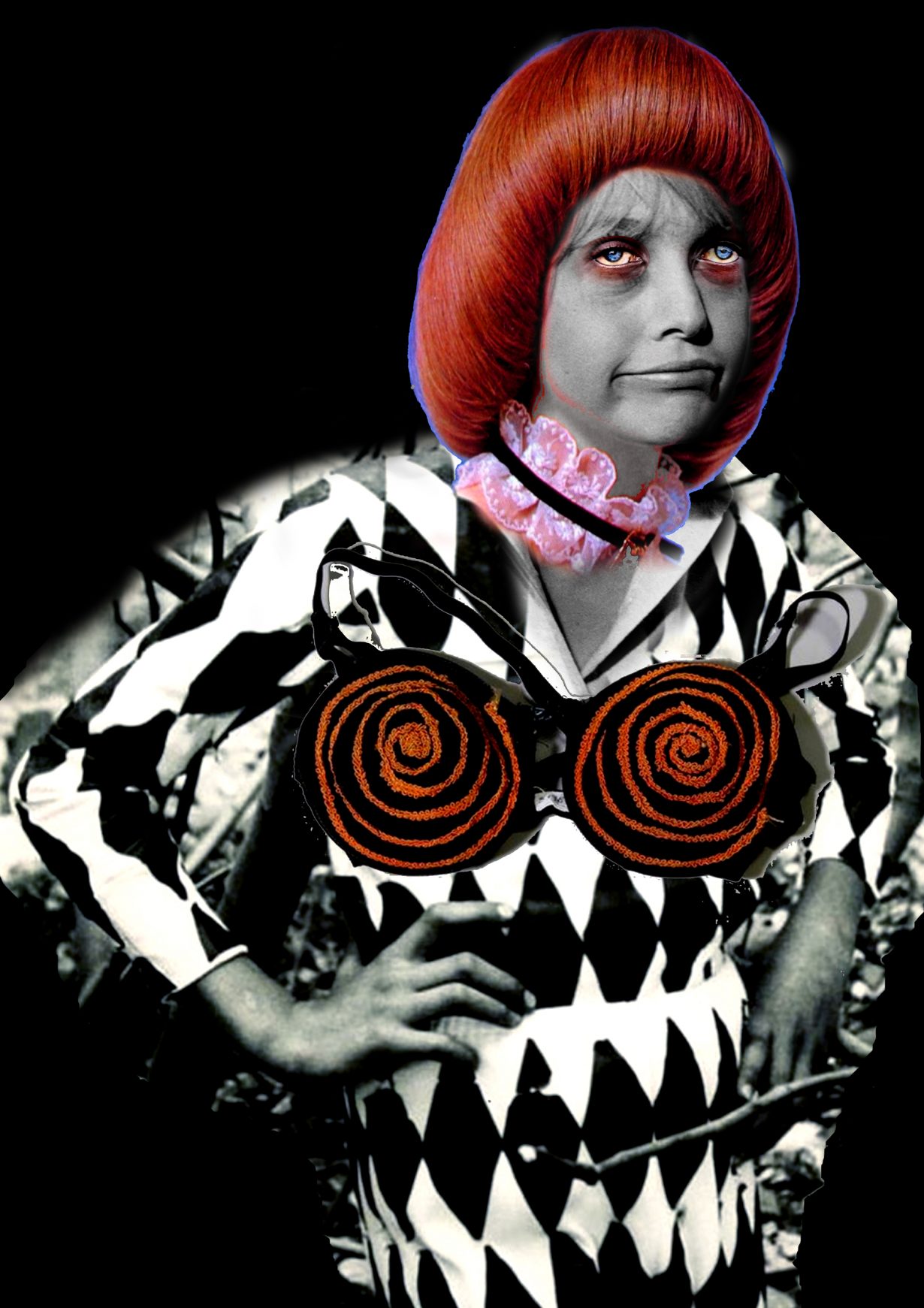Female Remedy at Haus am Waldsee, Berlin sets a satirical, candy-coloured stage for reflecting on society’s expectations of what a woman is and isn’t
Female hysteria was a ‘disease’ commonly diagnosed during the eighteenth and nineteenth centuries when a woman behaved in any way that made men feel uncomfortable. Its ‘symptoms’ including anxiety, fainting, insomnia and loss of appetite for food or sex, symptoms thought to be caused by the fragility, laziness and irritability of the female disposition. Feminist historians later argued that these were caused by women’s oppressed social roles. Many patients were sent to asylums and even received surgical hysterectomies. The notion of female hysteria, and its links to sexuality in particular, offers a lens through which to consider Los Angeles-born, Berlin-based artist Leila Hekmat’s first institutional exhibition. Female Remedy transforms the idyllic lakeside villa Haus am Waldsee into a satirical, surreal sanatorium where nurses and patients engage in debauched, erotic activities. This so-called ‘infirmary for an illness which needs no cure’, recasts the symptoms of female hysteria as positive forces, confronting the misogynistic notion that stereotypically feminine behaviours require medical attention.
However, ‘Hospital Hekmat’ is no relaxing female haven. Walls are draped floor-to-ceiling with fabrics printed with intricate lacelike patterns and Hannah Höch-esque collages of hybrid women: one pairs the head of a young girl, dark hair in two plaits, with a sculpted, tattooed torso, voluptuous breast on one side, muscular pectoral on the other. Elsewhere, hotchpotch mannequins are dressed in patients’ robes, nurses hats, erotic lingerie (one doll’s red leather knickers read ‘big girl panties’) and blue jackets with ‘Krankensister’ embroidered on the back, and posed suggestively: one bent over an examination table, others reclining seductively like Renaissance nudes. Like their 2D counterparts, their faces, smothered in lipstick and eyeshadow, are collaged, distorted or digitally manipulated while body parts are augmented: bustles accentuate buttocks, limbs are covered in black lines as if marked up for plastic surgery.

These amalgamated creatures are at once unsettling – as if created, and modified, by some mad scientist or unethical cosmetic surgeon, and recalling Bertolt Brecht’s 1926 play A Man’s a Man, with its First World War soldiers whose injured bodies are patched up with makeshift prosthetics – yet the collages’ combination of male and female body parts, as well as the decadent costumes and makeup worn by her mannequins that appear to reference drag aesthetics, suggest Hekmat is interested in blurring gender lines and working with a wider definition of femininity than was commonplace when hysteria
was diagnosed.
There are other highlights, such as a wooden platform punctured by a grid of upturned metal nails and painted with the phrase ‘trust me with your troubles’. However, there is little change in the situations Hekmat’s dummies are positioned in, or in the barrage of hanging fabrics covered in superficial Instagrammable feminist phrases (‘tampons should be free’, ‘bad girls go to hell’). Other elements, including a room full of beds with patients’ comical diagnoses printed on the white sheets – ‘a hippy who hates hippies’, ‘Jewish lesbian witch’ – and a soundscape of characters’ voices, draw attention to what’s missing: the living, breathing individuals who would bring Hekmat’s stage set to life.

It’s unsurprising that Female Remedy feels more mise-en-scène than installation: Hekmat is best known for performance work referencing the Theatre of the Absurd and Commedia dell’Arte. Yet Symptom Recital: Music for Wild Angels, the 90-minute performance accompanying the exhibition, did not take place in or interact with the theatrical setup. Instead, in the back garden, the five-strong cast of female characters – though several make references to their penises; more gender-blurring – are dressed in costumes referencing their inanimate counterparts inside. Weimar cabaret style, the patients and nurses shared stories, symptoms, desires and fantasies, mostly explicitly sexual. However, as with the installation itself, it was easy to become immune to the incessant, would-be humorous/outrageous onslaught of innuendos.
In one of the standout moments, the performers executed a seated choreographic routine, spreading their legs, thrusting their pelvises, licking their fingers and caressing their bodies while letting out erotic and deranged sighs and screams. Its success lay in the performers’ embodiment and distillation of Hekmat’s theme, which in the installation feels too surface-level to provoke deeper conversations. Her show sets a satirical, candy-coloured stage for reflecting on society’s expectations of what a woman is and isn’t, but ended up, from what I saw, as social media fodder. Perhaps Female Remedy is an intentional critique of the shallowness of contemporary feminist politics. These days, it’s much easier to reshare a photograph without further comment to demonstrate your allegiance to a cause (free sanitary products!) than to take direct action to achieve it.
Female Remedy at Haus am Waldsee, Berlin, through 8 January
